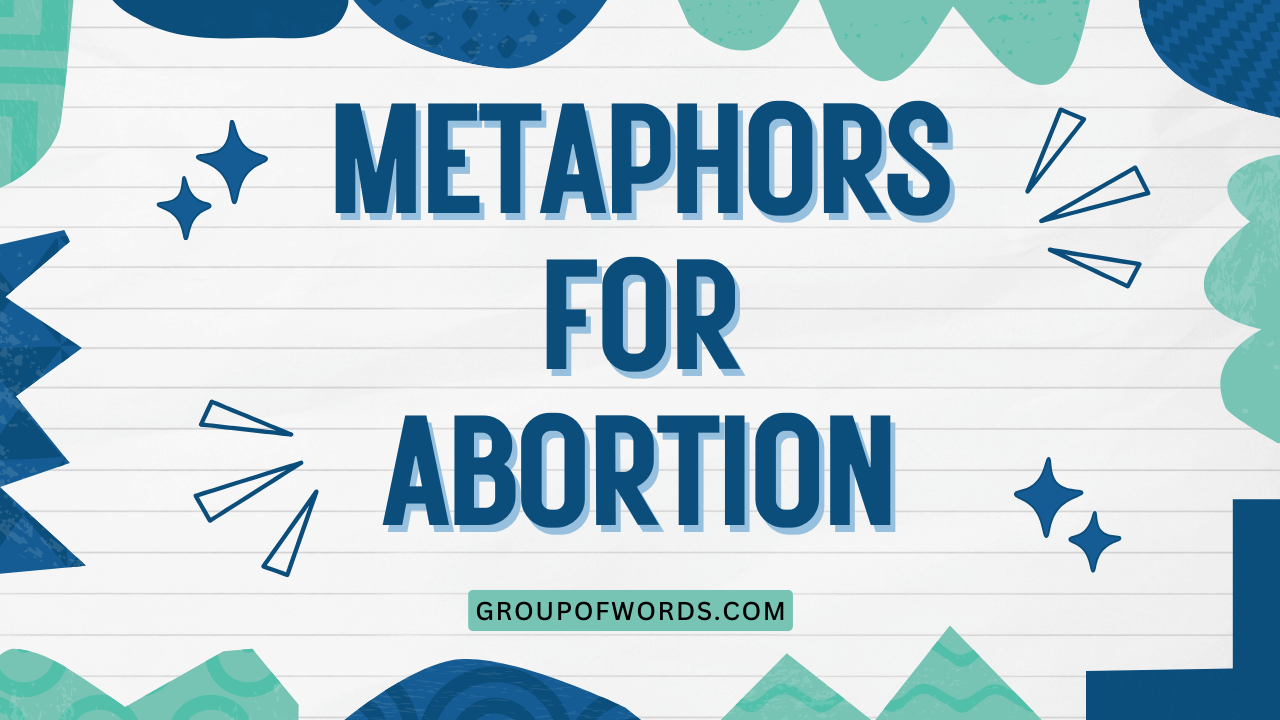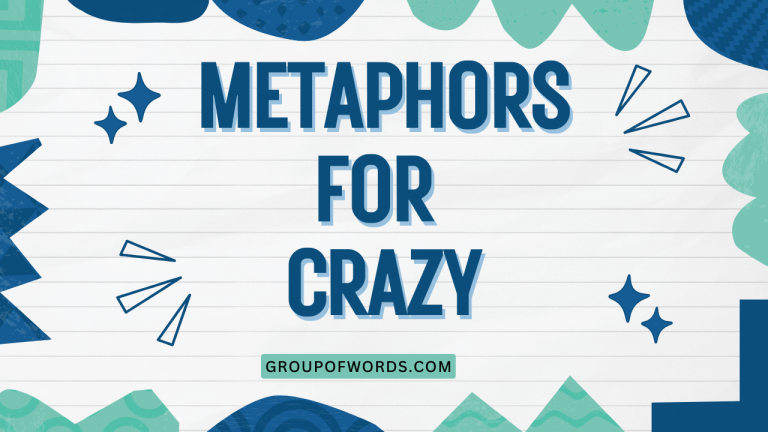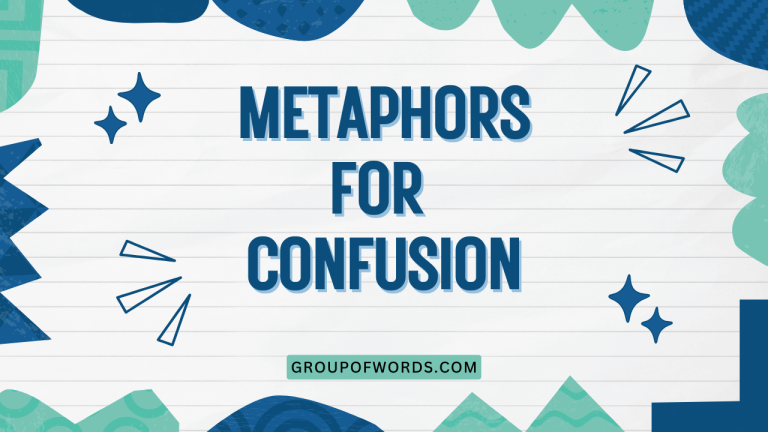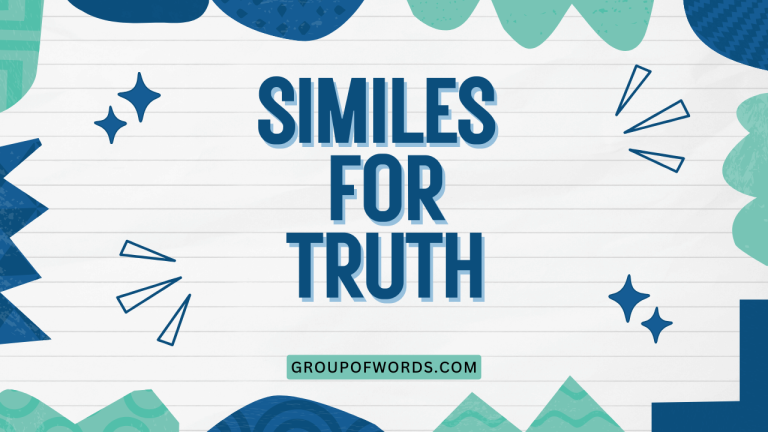Navigating Nuance: Understanding Metaphors for Abortion in English
Metaphors are powerful tools in language, shaping our understanding and influencing our perceptions. When discussing sensitive topics like abortion, the metaphors used can significantly impact the conversation.
This article explores the diverse range of metaphors employed in discussions about abortion, examining their grammatical structure, rhetorical effect, and potential to both clarify and obfuscate. Understanding these metaphors is crucial for anyone seeking to engage thoughtfully and respectfully in this complex debate.
Whether you are a student of rhetoric, a language enthusiast, or simply someone trying to navigate these conversations, this guide will provide you with the tools to analyze and interpret the metaphors surrounding abortion.
This article will benefit students of rhetoric, linguistics, and those interested in the intersection of language and social issues. It will also be valuable for anyone who wants to better understand the nuances of the abortion debate and the ways in which language shapes our perceptions.
Table of Contents
- Introduction
- Defining Metaphors for Abortion
- Structural Breakdown of Metaphors
- Types and Categories of Abortion Metaphors
- Examples of Abortion Metaphors
- Usage Rules and Considerations
- Common Mistakes in Using Abortion Metaphors
- Practice Exercises
- Advanced Topics in Metaphorical Analysis
- Frequently Asked Questions
- Conclusion
Defining Metaphors for Abortion
A metaphor is a figure of speech in which a word or phrase is applied to an object or action to which it is not literally applicable. It’s a way of understanding and experiencing one kind of thing in terms of another. In the context of abortion, metaphors are used to frame the issue in specific ways, often carrying strong emotional or ideological weight. These metaphors can influence public opinion, legal interpretations, and personal beliefs.
Metaphors for abortion can be classified based on the aspects they emphasize. They can focus on the medical procedure itself, the legal rights involved, the moral implications, or the broader social and economic context.
Each category of metaphor brings a different perspective to the conversation, highlighting certain aspects while obscuring others.
The function of these metaphors is not merely descriptive; they are persuasive. They aim to shape how people think and feel about abortion.
By framing abortion as a “medical procedure,” one might emphasize its clinical nature. Conversely, framing it as “ending a life” invokes moral and ethical considerations.
Structural Breakdown of Metaphors
Metaphors typically consist of two key elements: the tenor and the vehicle. The tenor is the subject being described (in this case, abortion), and the vehicle is the concept used to describe it. The connection between the tenor and the vehicle creates the metaphorical meaning.
For example, in the metaphor “Abortion is healthcare,” the tenor is “abortion,” and the vehicle is “healthcare.” This metaphor equates abortion with other forms of medical care, suggesting that it should be treated similarly.
Understanding the underlying structure of a metaphor involves identifying the tenor and the vehicle, as well as the specific qualities that are being transferred from the vehicle to the tenor. This analysis allows for a deeper understanding of the intended meaning and potential impact of the metaphor.
The effectiveness of a metaphor depends on its resonance with the audience. A metaphor that aligns with existing beliefs and values is more likely to be persuasive.
Conversely, a metaphor that challenges deeply held convictions may be met with resistance.
Types and Categories of Abortion Metaphors
Metaphors for abortion can be categorized based on the thematic areas they draw upon. Here are some common categories:
Medical Metaphors
Medical metaphors frame abortion as a healthcare issue, focusing on the procedure itself, the woman’s health, and the role of medical professionals. These metaphors often emphasize the clinical and procedural aspects of abortion.
Examples include: “a medical procedure,” “reproductive healthcare,” “a therapeutic intervention,” and “a necessary surgery.” These metaphors aim to normalize abortion by associating it with other accepted medical practices.
Legal Metaphors
Legal metaphors emphasize the legal rights and regulations surrounding abortion. They often focus on concepts such as bodily autonomy, privacy, and constitutional rights.
Examples include: “a constitutional right,” “reproductive freedom,” “bodily autonomy,” and “a matter of privacy.” These metaphors highlight the legal basis for abortion access and frame it as a fundamental right.
Moral Metaphors
Moral metaphors focus on the ethical and moral implications of abortion. They often involve concepts such as life, death, and responsibility.
Examples include: “ending a life,” “murder,” “a moral choice,” and “a violation of sanctity.” These metaphors highlight the moral dimensions of abortion and often present it as a morally problematic act.
Bodily Autonomy Metaphors
Bodily autonomy metaphors emphasize a woman’s right to control her own body and make decisions about her reproductive health. These metaphors are closely linked to legal and ethical arguments.
Examples include: “my body, my choice,” “reproductive freedom,” “bodily integrity,” and “personal sovereignty.” These metaphors underscore the importance of individual autonomy and the right to make personal decisions about one’s body.
War Metaphors
War metaphors frame the abortion debate as a battle between opposing sides, often using aggressive and confrontational language. These metaphors can be highly polarizing and emotionally charged.
Examples include: “a war on women,” “a battle for life,” “fighting for reproductive rights,” and “defending the unborn.” These metaphors create a sense of conflict and urgency, often portraying the issue as a zero-sum game.
Economic Metaphors
Economic metaphors frame abortion in terms of costs, benefits, and resources. They often consider the economic impact of abortion access on individuals, families, and society as a whole.
Examples include: “financial burden,” “economic opportunity,” “resource allocation,” and “investment in the future.” These metaphors highlight the economic dimensions of abortion and can be used to argue for or against access to abortion based on economic considerations.
Examples of Abortion Metaphors
The following tables provide numerous examples of metaphors used in discussions about abortion, categorized by type. Each example is designed to illustrate the different ways in which abortion can be framed metaphorically.
The following table presents examples of medical metaphors used in discussions about abortion. These metaphors often aim to normalize abortion by associating it with other accepted medical practices.
| Medical Metaphor | Explanation |
|---|---|
| A medical procedure | Frames abortion as a routine medical intervention. |
| Reproductive healthcare | Positions abortion as part of a comprehensive range of reproductive services. |
| A therapeutic intervention | Suggests that abortion is a treatment for a specific condition or situation. |
| A necessary surgery | Compares abortion to other essential surgical procedures. |
| Women’s health issue | Highlights the impact of abortion on women’s overall health and well-being. |
| A healthcare choice | Emphasizes the individual’s right to make decisions about their own healthcare. |
| Family planning | Positions abortion as a tool for managing family size and resources. |
| A safe and legal option | Reassures individuals about the safety and legality of abortion. |
| Preventative care | Suggests that abortion can prevent future health complications. |
| A compassionate option | Frames abortion as an act of kindness in difficult circumstances. |
| A clinical decision | Emphasizes the professional and objective nature of abortion. |
| A part of the continuum of care | Positions abortion within a broader spectrum of healthcare services. |
| A response to an unplanned pregnancy | Frames abortion as a solution to an unexpected situation. |
| A solution to a difficult situation | Highlights the practical benefits of abortion in challenging circumstances. |
| An option for fetal abnormalities | Suggests abortion is a humane choice when a fetus has severe health issues. |
| An option for maternal health | Emphasizes that abortion can protect the mother’s health. |
| A procedure with minimal risk | Downplays the potential complications of abortion. |
| A regulated service | Highlights the oversight and safety measures in place for abortion. |
| A personal medical decision | Reiterates the individual’s right to choose abortion. |
| A confidential service | Emphasizes the privacy and discretion surrounding abortion. |
| Access to care | Highlights the importance of ensuring that women can access abortion services. |
| A right to choose | Underlines the fundamental right to make decisions about one’s own body. |
| A complex medical issue | Acknowledges the multifaceted nature of abortion. |
| A necessary medical service | Reinforces the importance of abortion for women’s health. |
The following table presents examples of legal metaphors used in discussions about abortion. These metaphors often focus on concepts such as bodily autonomy, privacy, and constitutional rights.
| Legal Metaphor | Explanation |
|---|---|
| A constitutional right | Frames abortion as protected under the Constitution. |
| Reproductive freedom | Emphasizes the right to make decisions about reproduction without government interference. |
| Bodily autonomy | Highlights the right to control one’s own body and make decisions about healthcare. |
| A matter of privacy | Positions abortion as a private decision between a woman and her doctor. |
| A fundamental right | Elevates abortion to the level of a basic human right. |
| An inalienable right | Suggests that the right to abortion cannot be taken away. |
| A legal precedent | Highlights the established legal basis for abortion access. |
| A protected choice | Emphasizes the legal safeguards in place to protect abortion access. |
| A right to self-determination | Links abortion to the broader concept of individual autonomy and self-governance. |
| A right to control one’s destiny | Suggests that abortion allows women to shape their own futures. |
| A right to equality | Frames abortion access as essential for gender equality. |
| A right to liberty | Links abortion to the broader concept of freedom and personal autonomy. |
| A right to make informed decisions | Emphasizes the need for women to have access to accurate information about abortion. |
| A right to access healthcare | Positions abortion as a component of comprehensive healthcare access. |
| A legal and ethical choice | Highlights the legal and moral dimensions of abortion. |
| A personal and private decision | Reiterates the individual’s right to make decisions about their own body without interference. |
| A matter of personal conscience | Frames abortion as a decision based on individual moral beliefs. |
| A right to dignity | Links abortion to the broader concept of human dignity and self-respect. |
| A right to make autonomous choices | Emphasizes the importance of individual agency in reproductive decision-making. |
| A right to control one’s reproductive life | Highlights the importance of women having control over their reproductive health. |
| A right to plan one’s family | Positions abortion as a tool for managing family size and resources. |
| A right to pursue one’s goals | Suggests that abortion allows women to pursue their educational and career aspirations. |
| A right to live a full and meaningful life | Links abortion to the broader concept of human flourishing and well-being. |
| A right to make decisions free from coercion | Emphasizes the importance of ensuring that women are not pressured into having or not having an abortion. |
The following table presents examples of moral metaphors used in discussions about abortion. These metaphors often involve concepts such as life, death, and responsibility.
| Moral Metaphor | Explanation |
|---|---|
| Ending a life | Frames abortion as the termination of a human life. |
| Murder | Equates abortion with the intentional killing of a human being. |
| A moral choice | Highlights the ethical dimensions of abortion and the need for individual moral deliberation. |
| A violation of sanctity | Suggests that abortion defiles something sacred or holy. |
| A betrayal of innocence | Frames abortion as harming a vulnerable and defenseless being. |
| A rejection of motherhood | Suggests that abortion is a denial of the natural role of women. |
| A selfish act | Frames abortion as motivated by personal convenience rather than moral considerations. |
| A tragic decision | Acknowledges the difficult and painful nature of abortion while still framing it as morally problematic. |
| A necessary evil | Suggests that abortion is sometimes necessary to prevent greater harm. |
| A lesser of two evils | Frames abortion as the least bad option in a difficult situation. |
| A difficult moral dilemma | Highlights the ethical complexity of abortion and the absence of easy answers. |
| A question of human rights | Frames abortion as involving a conflict between the rights of the woman and the rights of the fetus. |
| A matter of personal conscience | Emphasizes the importance of individual moral beliefs in abortion decision-making. |
| A decision with profound consequences | Highlights the long-term impact of abortion on individuals and society. |
| A choice that must be made with care | Emphasizes the need for thoughtful deliberation and consideration of all factors. |
| A decision that should not be taken lightly | Reiterates the seriousness of abortion and the need for careful consideration. |
| A decision that should be made with compassion | Emphasizes the importance of empathy and understanding in abortion decision-making. |
| A decision that should be made with respect for life | Highlights the moral value of life and the need to consider the potential consequences of abortion. |
| A decision that should be made with respect for women | Emphasizes the importance of empowering women to make their own reproductive choices. |
| A decision that should be made with respect for families | Highlights the impact of abortion on families and the need to consider the well-being of all involved. |
| A reflection of societal values | Frames abortion as revealing underlying beliefs about life, gender, and family. |
| A test of our compassion | Suggests that how we respond to abortion reflects our capacity for empathy and understanding. |
| A challenge to our moral compass | Highlights the ethical complexity of abortion and the need for careful moral deliberation. |
| A reflection of our commitment to human dignity | Frames abortion as involving a conflict between competing claims of human dignity. |
The following table presents examples of war metaphors used in discussions about abortion. These metaphors often frame the issue as a battle between opposing sides, using aggressive and confrontational language.
| War Metaphor | Explanation |
|---|---|
| A war on women | Frames restrictions on abortion access as an attack on women’s rights and well-being. |
| A battle for life | Positions the anti-abortion movement as fighting to protect the lives of the unborn. |
| Fighting for reproductive rights | Frames the pro-choice movement as defending women’s right to choose. |
| Defending the unborn | Highlights the anti-abortion movement’s commitment to protecting the lives of the unborn. |
| Waging a campaign against abortion | Frames the anti-abortion movement as actively working to restrict or eliminate abortion access. |
| A struggle for justice | Positions the abortion debate as part of a broader struggle for social justice. |
| A clash of values | Frames the abortion debate as a conflict between deeply held beliefs and principles. |
| A battleground for human rights | Highlights the human rights dimensions of the abortion debate. |
| Taking a stand for life | Positions the anti-abortion movement as defending the inherent value of human life. |
| Protecting the vulnerable | Frames the anti-abortion movement as safeguarding the interests of those who cannot protect themselves. |
| A fight for equality | Positions the pro-choice movement as working to ensure that women have equal opportunities and rights. |
| Resisting oppression | Frames the pro-choice movement as fighting against unjust laws and policies. |
| A war of attrition | Suggests that the abortion debate is a long and drawn-out conflict with no clear end in sight. |
| A battle of wills | Frames the abortion debate as a test of determination and resolve. |
| A struggle for the soul of the nation | Highlights the profound moral and cultural implications of the abortion debate. |
| A conflict over fundamental values | Frames the abortion debate as a clash between competing worldviews and belief systems. |
| A battle for the future | Suggests that the outcome of the abortion debate will shape the future of society. |
| A war against choice | Frames restrictions on abortion access as an attack on women’s autonomy and freedom. |
| Defending freedom | Positions the pro-choice movement as safeguarding individual liberty and self-determination. |
| A campaign for compassion | Frames efforts to support pregnant women and new mothers as an act of kindness and empathy. |
| A struggle for human dignity | Highlights the importance of respecting the inherent worth and value of all human beings. |
| A fight for social justice | Positions the abortion debate as part of a broader effort to create a more equitable and just society. |
| A battle against injustice | Frames efforts to restrict abortion access as perpetuating inequality and discrimination. |
Usage Rules and Considerations
When using metaphors for abortion, it’s crucial to be aware of their potential impact and to use them responsibly. Here are some guidelines:
- Be clear about your intention: Consider what you want to communicate and choose metaphors that align with your message.
- Be sensitive to your audience: Recognize that different people may react differently to certain metaphors.
- Avoid inflammatory language: Steer clear of metaphors that are overly aggressive or emotionally charged.
- Be accurate and fair: Ensure that your metaphors accurately reflect the complexities of the issue.
- Be open to dialogue: Be willing to listen to and engage with different perspectives on abortion.
It’s also important to understand the limitations of metaphors. While they can be powerful tools for communication, they are not a substitute for reasoned argument and factual evidence.
Common Mistakes in Using Abortion Metaphors
Several common mistakes can undermine the effectiveness of metaphors used in discussions about abortion. Here are some examples:
Incorrect: “Abortion is baby killing.” (This is a highly charged and inaccurate metaphor that equates abortion with murder.)
Correct: “Some believe abortion is ending a life.” (This acknowledges the moral concerns of some while avoiding inflammatory language.)
Incorrect: “Abortion is just a medical procedure.” (This oversimplifies the issue and ignores the ethical and emotional dimensions.)
Correct: “Abortion is a medical procedure with significant ethical implications.” (This acknowledges the complexity of the issue.)
Incorrect: “Pro-choice advocates are waging a war on babies.” (This is an aggressive and inaccurate metaphor that demonizes pro-choice advocates.)
Correct: “The abortion debate can be seen as a conflict between competing values.” (This frames the issue as a clash of beliefs rather than a personal attack.)
Another common mistake is using metaphors that are inconsistent with one’s overall argument. For example, someone who argues that abortion should be legal because it is a private matter should avoid using metaphors that emphasize the social or economic benefits of abortion.
Practice Exercises
Test your understanding of metaphors for abortion with the following exercises.
Exercise 1: Identifying Metaphors
Identify the metaphor in each of the following sentences and explain its intended meaning.
| Question | Answer |
|---|---|
| 1. Abortion is a form of reproductive freedom. | Metaphor: Reproductive freedom. Meaning: Abortion is a right to make decisions about reproduction. |
| 2. Abortion is ending a potential life. | Metaphor: Ending a potential life. Meaning: Abortion terminates a life that could have been. |
| 3. Restricting abortion access is a war on women. | Metaphor: War on women. Meaning: Restricting abortion is an attack on women’s rights. |
| 4. Abortion is healthcare, plain and simple. | Metaphor: Healthcare. Meaning: Abortion is a necessary medical service. |
| 5. The abortion debate is a battle for the soul of the nation. | Metaphor: Battle for the soul. Meaning: The debate reflects fundamental values. |
| 6. Abortion is a safety net for women in crisis. | Metaphor: Safety net. Meaning: Abortion provides support during difficult times. |
| 7. Opposing abortion is defending the defenseless. | Metaphor: Defending the defenseless. Meaning: Protecting the unborn is a moral imperative. |
| 8. Abortion access is a ladder to economic opportunity. | Metaphor: Ladder to opportunity. Meaning: Abortion helps women achieve financial stability. |
| 9. The pro-life movement is a shield against moral decay. | Metaphor: Shield against decay. Meaning: The movement protects traditional values. |
| 10. Abortion is a private matter that should remain between a woman and her doctor. | Metaphor: Private matter. Meaning: The decision is personal and confidential. |
Exercise 2: Analyzing Metaphors
Analyze the following metaphors by identifying the tenor and the vehicle, and explaining the connection between them.
| Question | Answer |
|---|---|
| 1. Abortion is a financial burden for many women. | Tenor: Abortion. Vehicle: Financial burden. Connection: Abortion can create expenses. |
| 2. Abortion is a right, not a privilege. | Tenor: Abortion. Vehicle: Right. Connection: Access should be guaranteed. |
| 3. Abortion is a difficult chapter in a woman’s life. | Tenor: Abortion. Vehicle: Difficult chapter. Connection: Abortion can be emotionally challenging. |
| 4. Abortion is an act of violence against the unborn. | Tenor: Abortion. Vehicle: Act of violence. Connection: Abortion is seen as harming a fetus. |
| 5. Abortion is a tool for population control. | Tenor: Abortion. Vehicle: Tool. Connection: Abortion can control population size. |
| 6. Abortion is a lifeline for women in abusive relationships. | Tenor: Abortion. Vehicle: Lifeline. Connection: Abortion provides an escape from abuse. |
| 7. Abortion is a sign of societal failure. | Tenor: Abortion. Vehicle: Sign of failure. Connection: High abortion rates indicate problems. |
| 8. Abortion is a step towards gender equality. | Tenor: Abortion. Vehicle: Step towards equality. Connection: Abortion empowers women. |
| 9. Abortion is a Pandora’s Box of moral issues. | Tenor: Abortion. Vehicle: Pandora’s Box. Connection: It opens up complex questions. |
| 10. Abortion is a solution that creates more problems. | Tenor: Abortion. Vehicle: Solution that creates problems. Connection: There are long-term issues. |
Exercise 3: Using Metaphors
Write a sentence using a metaphor to describe abortion from each of the following perspectives:
| Perspective | Answer |
|---|---|
| 1. A doctor | As a doctor, I see abortion as a necessary medical intervention to protect women’s health. |
| 2. A lawyer | As a lawyer, I view abortion as a fundamental right under the Constitution. |
| 3. A religious leader | As a religious leader, I consider abortion a violation of the sanctity of life. |
| 4. A woman who has had an abortion | For me, abortion was a lifeline that allowed me to pursue my dreams. |
| 5. A politician | As a politician, I believe abortion is a complex issue that requires careful consideration. |
| 6. A social worker | As a social worker, I see abortion as a difficult choice with profound consequences. |
| 7. An economist | From an economic perspective, abortion can be seen as a factor influencing workforce participation. |
| 8. A feminist | For feminists, abortion is a cornerstone of reproductive freedom and gender equality. |
| 9. A parent | As a parent, I believe abortion is a decision that should be made with love and care. |
| 10. A student | As a student, I see the abortion debate as a critical examination of our societal values. |
Advanced Topics in Metaphorical Analysis
For advanced learners, exploring the following topics can provide a deeper understanding of metaphors for abortion:
- Cognitive Metaphor Theory: This theory explores how metaphors shape our understanding of abstract concepts.
- Framing Analysis: This method examines how metaphors are used to frame issues in specific ways.
- Rhetorical Analysis: This approach analyzes the persuasive techniques used in metaphorical language.
- Critical Discourse Analysis: This perspective examines how metaphors can be used to reinforce power structures and social inequalities.
By delving into these advanced topics, learners can develop a more nuanced and sophisticated understanding of the role of metaphors in the abortion debate.
Frequently Asked Questions
Here are some frequently asked questions about metaphors for abortion:
- What is the purpose of using metaphors in discussions about abortion?
Metaphors are used to frame the issue in specific ways, often carrying strong emotional or ideological weight. They can influence public opinion, legal interpretations, and personal beliefs.
- How can I identify a metaphor in a sentence about abortion?
Look for words or phrases that are used in a non-literal way to describe abortion. Identify the tenor (the subject being described) and the vehicle (the concept used to describe it).
- What are some common categories of metaphors used in discussions about abortion?
Common categories include medical metaphors, legal metaphors, moral metaphors, bodily autonomy metaphors, war metaphors, and economic metaphors.
- How can I use metaphors effectively when discussing abortion?
Be clear about your intention, be sensitive to your audience, avoid inflammatory language, be accurate and fair, and be open to dialogue.
- What are some common mistakes to avoid when using metaphors for abortion?
Avoid using metaphors that are overly aggressive, emotionally charged, inaccurate, or inconsistent with your overall argument.
- How can I analyze the impact of a particular metaphor on the abortion debate?
Consider the emotional connotations of the metaphor, the values it invokes, and the way it frames the issue. Analyze how the metaphor might influence public opinion and shape the conversation.
- Why is it important to understand the metaphors used in discussions about abortion?
Understanding these metaphors is crucial for engaging thoughtfully and respectfully in the complex debate, and for recognizing how language shapes our perceptions.
- Can metaphors be used to promote dialogue and understanding in the abortion debate?
Yes, when used responsibly and thoughtfully, metaphors can help to bridge divides and foster empathy and understanding. However, it is important to be mindful of the potential for metaphors to be divisive and inflammatory.
Conclusion
Understanding metaphors for abortion is essential for navigating the complexities of this sensitive issue. By recognizing the different types of metaphors, analyzing their structural elements, and using them responsibly, we can engage in more informed and productive conversations.
Remember that metaphors are powerful tools that can shape our perceptions and influence our beliefs. Therefore, it is crucial to be mindful of their potential impact and to use them with care.
The key takeaways from this article include the importance of identifying the tenor and vehicle of a metaphor, understanding the different categories of metaphors used in the abortion debate, and avoiding common mistakes in their usage. By applying these principles, you can enhance your understanding of the abortion debate and communicate your own views more effectively.
Continue practicing your skills in identifying and analyzing metaphors, and be open to learning from others. By doing so, you can become a more informed and engaged participant in this important conversation.






